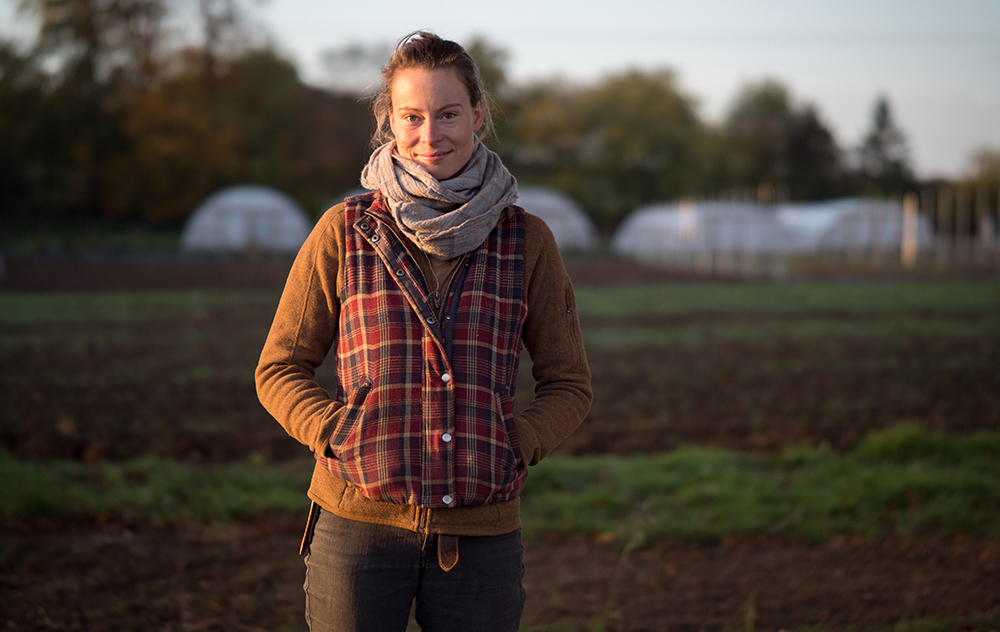Charlotte Griffiths meets Calixta Killander, a revolutionary local produce grower who supplies some exquisite veg, salads and greens to some of the finest restaurants in the country
Back in October, after months of creeping concern for the planet and ardent campaigns against plastic straws, the word of 2018 was announced as “single-use”. But as you’d expect, Cambridge foodies were ahead of the curve: it feels like every coffee shop in the city now offers its own branded Keep-Cup, and vibrantly coloured metal water bottles were clearly the commuter’s accessory du jour during the long hot summer.
Whether it’s down to that slightly unsettling weather, or programmes such as Blue Planet highlighting damage caused by waste products, there’s no question that many of us are starting to take a more considered approach to how we treat our habitat. Avoiding single-use items is a start, and we’re all too aware of the power of consumers voting with their feet – but what else should a foodie be looking for, besides a pot of metal straws on the backbar?
Nowadays, menus filled with tales of provenance have become almost commonplace: dishes are rarely seen without a geolocator or seasonal suffix telling a story, and giving the customer a warm glow – but what does it all actually mean?
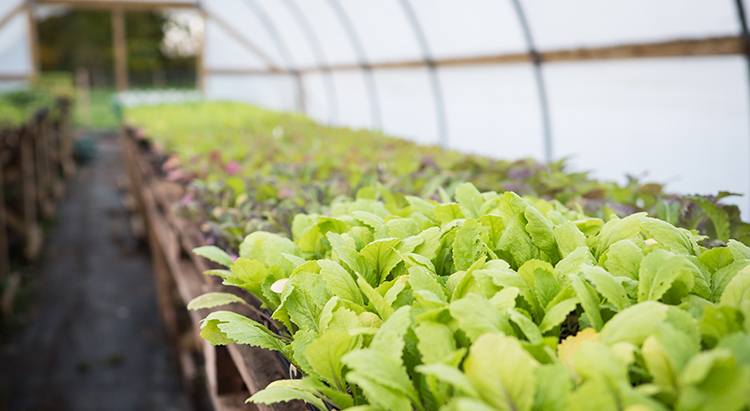
Like the reusable cup nestling in your bag, this isn’t a single-use question: it’s one we should be asking over and over again, especially of our most favourite restaurants. Where does your produce come from?
As long as you don’t ask them mid-service, most responsibly minded chefs will take great delight in sharing their reasoning, in enthusiastic detail. Knowing where your produce comes from and why you’ve chosen it is the starting point for any independent eatery worth its salt, and a growing number of top-flight restaurants in London and Cambridge, including several adorned with Michelin stars, would – when asked – put one hand on their heart and with the other, point at an unassuming cluster of buildings just off the A1307, between Linton and Abington.
Meet Calixta Killander, farmer and founder of Flourish, whose single-minded pursuit of flavour and steadfast commitment to doing things properly has seen her 18-month-old business bloom. Born locally, Calixta spent seven years studying, working and learning from agricultural businesses across America, before returning to this small set of rolling fields to take a different approach to farming. This revolutionary fresh produce grower now supplies some of the finest restaurants in the country with exquisite vegetables, unexpected salads and unusual greens: all fresh, all grown by hand, and all – most importantly – completely delicious.
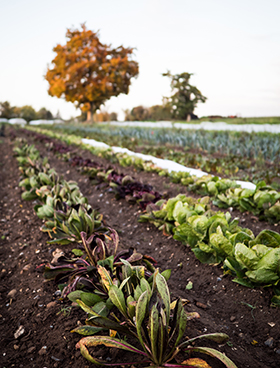
At Flourish, organic is only the beginning. Calixta’s fields also never see tractor fumes, with heavy work done by Bill and Ben – two Comtois horses – and a small team of workers who carry out the finer weeding and hand-harvesting required to produce crops of this astonishing quality. But it all starts with the soil.
“It’s boring to hear about for a lot of people – it’s very farmy, and not very foodie – but things like green manures are absolutely central to regenerative agriculture, which is what we’re trying to do here,” Calixta says. “We’re investing in the fertility bank of the farm, rather than just extracting from it. It’s beyond organic agriculture, beyond sustainability, and it’s absolutely key – not just for a biodiverse ecosystem, but for flavourful produce. For us, flavour is so important – it’s something we absolutely cannot compromise on. And building amazing rich soil filled with microorganisms and beneficial bacteria has a huge impact on what you’re going to harvest.”
As a producer, putting time and energy into growing non-sellable crops like green manures, for example, is costly, and it’s understandable why other small-scale growers wouldn’t be able to do it. But for Calixta, it’s a non-negotiable. “This approach is really challenging. It’s not as easy as planting a seed and harvesting it later, but it’s one of those things: if you invest now, and incorporate it into your farm, you’ll be paid back one thousand times in the future.”
Keen foodies might recognise Calixta from a recent issue of Observer Food Monthly, where chef Tomos Parry from newly-starred restaurant Brat – one of Flourish’s clients – was photographed at the farm, alongside Calixta and her horses, to show the close connection between chef and grower. And it’s this link that Calixta was focused on when she started Flourish in the summer of 2017, having been inspired by her experiences in the States and spotting that selling direct to restaurants was the most sensible route to follow. But it’s not just about business strategy: it’s also the joy of interacting with people who share her enthusiasm for unusual produce.
“I adore crazy vegetables,” Calixta laughs. “I love hunting out wild, wacky things, and that’s something which gives me so much drive and joy. I wanted to be able to do that, but I also understand that most people wouldn’t know what to do with celtuce, for example – but I know there’d be chefs out there who’d be overjoyed. When I moved back, I made a list of all these restaurants in the UK, mainly in London, that I thought – in ten years’ time, this is who I want to be working with. And… it’s crazy, and I don’t know how, but we’re already working with most of those restaurants. It’s a combination of lots of magical things that have happened, with wonderful people helping.”
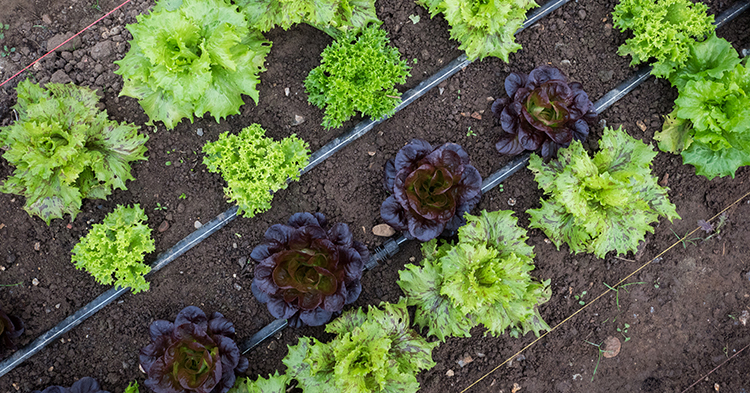
As you’d expect, it’s difficult to grow to order, with long seasons, changing trends and unpredictable weather sometimes causing havoc – but Calixta’s clients now trust her judgement and quality enough that they’ll take whatever produce Flourish can share. “The chefs we’re working with like trying new things,” she says, “and they’re just supportive of us as a farm rather than asking for a specific carrot.”
In return for such astonishing quality produce, Calixta hopes that Flourish’s regenerative, rather than sustainable, approach will be shared more widely. “Chefs have this amazing opportunity – they’re leading the industry,” she says. “They decide what the next trendy vegetable is, and everyone will copy – supermarkets and so on. So if this regenerative approach can be shared with the public, hopefully that information will spread further. It’s got to be talked about in different areas before it becomes recognised.”
So what’s a day like at Cooks Pen Farm? “In peak season, I’ll get up about 4am. I’ll have a quick brekkie and tea, and then head out immediately,” Calixta says. “On a farm, in the summer, lots of tasks have to be done first thing, when it’s cooler. Usually we’ll get harvesting right away, especially the finer leaves that need to be picked really early or the quality becomes terrible and their shelf-life diminishes.
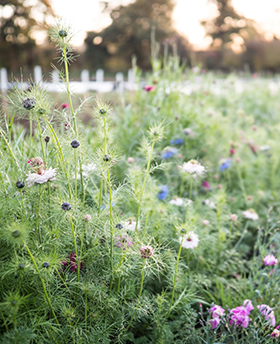
“Then we get things brought in and packed up – and usually then I’ll do horse work, which also has to happen early in the morning. I’ll go and get Bill and Ben from the pasture, bring them up, groom them, harness, and hitch them up to – usually – the cultivator… And afterward they have a shower, go in the stables and cool down, and it sounds ridiculous but they have fans, because they’re such big horses… they’ve got the good life!” she laughs.
“We’re also trying to be organised with a weekly routine – so all of our tomatoes need to be trellised and pruned weekly, courgettes and cucumbers are picked daily, which usually happens after lunch – planting usually happens in the morning because there are better conditions… then we’d do weeding, cultivating, all sorts of different jobs.”
Delivery days, when Flourish produce is dropped off at restaurants throughout Cambridge and London, are totally different, seeing the whole team focus on harvesting, packing and then delivering on the very same day – meaning that in some Flourish-supplied eateries, you’ll be served produce that was in the ground that morning.
“For example – our mixed salad is seeded weekly: some are cut multiple times and will regrow, but some are single cut, because we want to keep the quality really high. We don’t currently wash our salads – we don’t have the infrastructure, but also we think the chefs probably do a better job of that than we can at the moment. Everything that’s picked is brought in individually, and then we’ll do the mixing: sometimes customers specify when they want more or less of an ingredient, but others are happy to have our daily pick, where we choose what’s really at their best in the field. And then it’s packed, and we deliver it. The salads, herbs and edible leaves, and lots of the greens – they’ll be in kitchens within three, four hours of picking.”
“I adore crazy vegetables. It gives me so much joy”
As you’d expect with a schedule like this, Calixta hasn’t had a holiday in a long time. “I would love to one day,” she laughs, “and that’s part of what we’re trying to do here, growing unusual things that people want – I’d love to travel and find new varieties… but I love what I do. I know it’s not sustainable to work hard forever, but the beginnings of a project are always hard.”
Calixta is hoping to run events and open days in the future, and there’s a plan for Flourish’s website to be revamped with a space for longer updates – but for now, you can live vicariously through Flourish’s Instagram feed, where they post photos of crops in the fields, horses hard at work, and polytunnels gently glowing in the sideways winter sun. And if that inspires you to hunt out Flourish produce for yourself, here’s a tip: the one place you can find Calixta’s wares without having to be a chef is the Farm Shop at Old Granary Organics in Linton. See you in the queue…
Calixta’s foodie pick
One place that I adore is the Queen’s Head in Newton – it’s my favourite pub. They have food trucks there, and because I don’t have time to get to foodPark, or the events, it’s a really great way to go and try different food trucks… and also the pub is just amazing.

